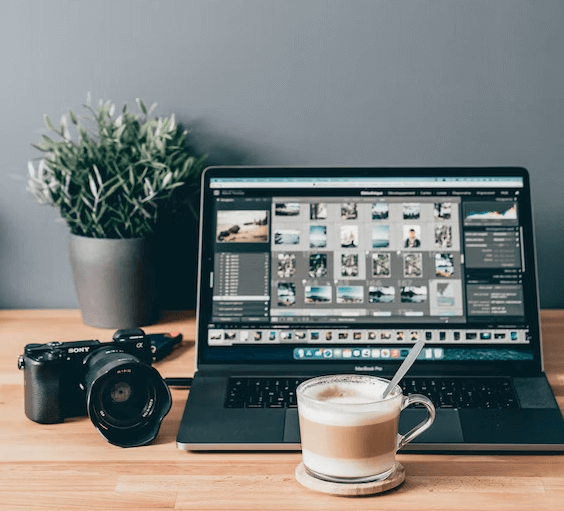
9 Most Common Photo Editing Mistakes You Should Avoid
Editing photos and turning them into beautiful images is a skill that not everyone has but it’s something we should all learn how to do. All you need is a computer with any editing software and you can start learning how to edit. That being said, like any skill, getting good takes time, effort, and practice.
It would be a great help for beginners to know how editing can improve visual quality, and when some simple photo editing mistakes can ruin your entire work.
Photo Editing Makes a Difference
It may be obvious to see that the purpose of making beautiful images look even better, but how exactly it turns out that way is something that you need to dig deeper to understand.
Edits allow you to add detail, remove unneeded elements, alter color and lighting, and even combine different images. You can also morph original photos into completely different, unrecognizable pictures.
Learning the skills for editing photos isn’t just about creating pieces of art to be admired. The visual editing industry is always high in demand and is essential for boosting brand status. Most businesses need professional editing to be done on their product pictures to create high-quality images that attract customers and build their brand identity.
There is almost nothing that photo editing can’t do, but at the same time, the learning curve to become proficient requires patience and constant learning. Now it’s time for you to know of the common photo editing mistakes that beginners and even experienced individuals sometimes commit.
9 Photo Editing Mistakes to Avoid
Editing the Original Photo
Have you ever experienced editing over an original photo? You might think that creating a copy of your original photo and working on a duplicate is common sense, but even though this is one of the most simple and careless photo editing mistakes, it’s an easy one to make. You might be working on multiple things at once and accidentally edit over the original file. You never know when it might happen to you.
An easy solution to this is to make it a rule to always create multiple copies of an image before editing it. Remember to name them accordingly too, so you won’t get confused with various files. After all, organization solves confusion.
Careless Cropping
Another easy mistake to make is cropping your photos too wide, too narrow, or at the wrong points. The general rule of thumb when it comes to cropping is to avoid cutting off at the joints of your subject. The body is divided into sections and joints such as your limbs, torso, knees, and shoulders for example.
You don’t want to be cropping at these points because it creates an image of something that’s missing. You want to aim to visually emphasize a person’s strong points which means that you should keep areas of the body that complement your subject.
As we mentioned before, it becomes easier with practice. Once you get the hang of proper cropping, you will have a solid foundation for your beautiful images.
Not Utilizing Layers
Layers, or the lack thereof, are what give a sense of scale and environment to your photos. Editing photos without layers will leave you with an image that looks flat and plain. You could also be layering your photos incorrectly by ignoring the foreground and focusing solely on your subject without regard to the visual surroundings. These are just some examples of layering mistakes that you might make.
A good way to understand layers is to separate each into 3 basic parts. The foreground is the element closest to the camera and usually, in front of your subject, the background shows the environment and setting around your subject and finally, the subject itself. Layering becomes more simple once you have a solid view of the different elements in a photo.
Overdoing Lighting and Shadows
It is ideal to utilize good natural lighting and shadows when shooting photos. But now with the help of photo editing, we are able to play with image lighting to our heart’s content.
However, just because we can brighten the lights and bolden the shadows, doesn’t mean we should overdo it for every photo. We can easily commit photo editing mistakes like this when we misuse the power of modern editing. Even with all the latest equipment, professional photography teams know the most beautiful images are always grounded in a natural setting.
Excessive Color Contrast (Oversaturation)
If you go overboard with the saturation you end up having a color contrast that’s hard to look at. Not only does it become unnatural, but it also takes away focus from the subject and directs it to the glaring colors. When you’re editing photos, use color contrast in moderation and keep the natural beauty of colorful elements.
Aggressive Retouching
We all want the best outcome for our portrait photos, which also means we would rather not show off things such as blemishes, wrinkles, and dark lines on our skin. Retouching helps by removing unwanted impurities on your body, and enhancing color for better-looking skin and shading.
Being too aggressive with retouching when editing photos will result in irregular-looking features, plastic-like skin, and unnatural coloration. This is one of the photo editing mistakes which may come across as trying too hard to hide imperfections. You should only retouch minor details and not be ashamed of how you look.
Unnecessary Effects
It’s normal to want to stand out, but using unnecessary special effects when editing photos just announce it to everyone. Bombastic lighting, sparkling eyes and teeth, and crazy filters all sound fun to use but don’t really help with realistic portraits.
Keep in mind that beautiful images don’t need much alteration and effects for them to be an eye-catching sight.
Over-Sharpening
The sharpening tool helps add more detail to an image by increasing the contrast between darker and lighter pixels. If you over-sharpen an image, it will end up looking rougher and more blurry. The image will appear messy and congested with too many detailed elements that lessen the emphasis on the subject. Use the sharpening tool moderately by only enhancing certain areas of the subject.
Forgetting to Calibrate Your Monitor
One of the photo editing mistakes we may overlook is forgetting to adjust your monitor settings for image quality and accuracy. Without properly calibrating your monitor, the quality and contrast of the image on the screen may be completely different from the final printed copy. Be sure that your monitor settings match your editing software and printing settings for the right image outcome.
Avoiding mistakes is a good step toward improving your photo editing skills. Now that you know what can go wrong when editing, you can easily understand effective ways to produce beautiful images.




